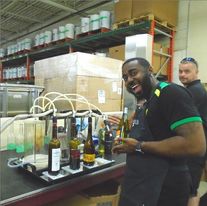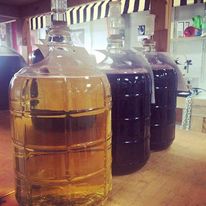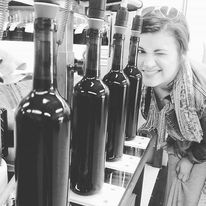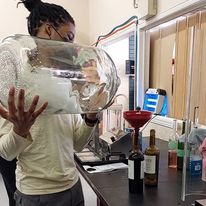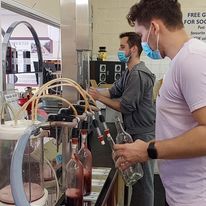Wine and Sustainability: Uncorking the Facts
It’s fair to say that us Canadians are a proud nation of wine drinkers. According to Insights from Wine Australia[1], Canada only narrowly misses out on being one of the world’s top 10 wine consuming countries – not bad for a nation that’s only the 37th most densely populated. Ontario is second only to Quebec when it comes to sheer volume of wine sales, however, this consumption comes with a high price.
A staggering 65% of the cost of each bottle of wine you buy is given over to tax. That’s a steep price to pay in the face of a cost-of-living crisis and soaring inflation. But there’s also another cost that must be factored in. And that’s environmental.
Wine and the environment
Sustainability and making more sustainable choices is increasingly important to today’s consumers. But that’s not to say it’s always easy.
According to Earnst and Young, consumers want to buy sustainably, but they need companies to facilitate that process, especially right now, when price is the number one purchase criteria for most households. There is also a sustainability education gap among consumers — 73% say they need more information to make better choices when shopping[2]. We’re here to help you do just that with our introduction to sustainability and the wine industry.
Wine and sustainability facts
Here at Wine Butler, we know that consumers want to make better choices to protect the planet and be kinder to their pockets at a time when every cent counts. The two don’t have to be mutually exclusive. But to make better choices, it’s important to have the full picture. That’s why we’ve brought together the most important wine sustainability facts for your consideration:
- Fact: the ubiquitous wine bottle is the single largest contributor to any winery’s carbon footprint. Some estimates suggest that wine bottles make up 60% of the industry’s total emissions[3].
- Fact: If everyone in North America switched to bottling their own wine rather than purchasing from the store, total greenhouse gas emissions would be reduced by about two million tons, or the equivalent of retiring 400,000 cars.[4]
- Fact: A single 750ml wine bottle creates about 5 pounds of carbon-dioxide emissions at the point of manufacture[5].
- Fact: Over 3 billion wine bottles go to landfill in North America each year[6].
- Fact: Just 31% of glass bottles are recycled in US, compared with 74% in Europe and 95% in Sweden, Belgium and Slovenia[7].
- Fact: In Ontario, the LCBO recycles approximately 93% of the 400 million bottles and cans sold annually through the Ontario Deposit Return Program and municipal curbside Blue Box programs. However, glass wine bottles, recycled and then re-manufactured, are still the largest source of the wine industry’s carbon footprint due to the heat and energy used to produce, fill, and transport bottles around the globe[8].
- Fact: Reusing a glass bottle can reduce plastic use by as much as 90%[9].
- Fact: Refillable wine bottles have a smaller carbon footprint than either PET bottles or Tetra Paks, even when accounting for the energy used to wash the bottles[10].
- Fact: Not all wine bottles can be recycled through traditional recycling processes to become a new, clean bottle due to quality and color considerations[11].
Can wine bottles be more sustainable?
Re-using and re-filling wine bottles extends their useful life and reduces the number of new wine bottles that need to be manufactured. This can significantly drive down emissions and reduce the water and energy consumption needed for new glass bottles to be created.
Sterilizing and re-using wine bottles is one of the most sustainable decisions you can make as a consumer.
[1] Source: https://www.wineaustralia.com/market-insights/canada#:~:text=Canada%20ranks%20just%20outside%20the,per%20cent%20of%20wine%20consumption.
[2] Source: https://www.ey.com/en_uk/consumer-products-retail/make-sustainability-accessible-to-the-consumer
[3] Source: https://www.washingtonpost.com/food/2021/11/04/wine-bottle-carbon-footprint-cop26/
[4] Source: https://www.nytimes.com/2008/08/18/opinion/18colman.html#:~:text=Switching%20to%20wine%20in%20a,equivalent%20of%20retiring%20400%2C000%20cars.&text=But%20here’s%20another%20reason%20to,wine%20market%20in%20the%20world.
[5] Source: https://www.ecoandbeyond.co/articles/4-reasons-to-drink-bag-in-box-wine/#:~:text=%E2%80%9CA%20standard%20wine%20bottle%20holds,the%20emissions%20per%20750%20milliliters
[6] Source: https://www.nytimes.com/2021/06/10/dining/drinks/wine-bottles-climate-change.html
[7] Source: https://feve.org/recyclingstats2018/
[8] Source: https://www.lcbo.com/content/lcbo/en/sustainability/good-planet.html
[9] Source: https://www.ellenmacarthurfoundation.org/circular-examples/a-reusable-drinks-bottle-design-for-multiple-brands-universal-bottle
[10] Source: https://environmentaldefence.ca/wp-content/uploads/2016/01/WineBottleReport_July19.pdf
[11] Source: https://www.wineenthusiast.com/culture/wine/sustainable-wine-packaging/



